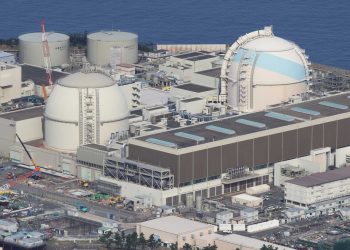, Russian experts will airlift 300 kilograms (660 pounds) of enriched uranium, much of it weapons-grade, from a Soviet-era nuclear research reactor in eastern Germany back to Russia, officials said on Dec. 6.
“We cannot release the precise date due to security reasons,” said a nuclear official in Germany acquainted with plans to remove 200 kilograms of highly-enriched uranium (HEU) and 100 kilograms of low-enriched uranium from the research reactor in Rossendorf, outside Dresden.
The 200 kilograms of HEU could theoretically fuel around 10 nuclear weapons if the material is pure enough, he said.
The transport will be done by airplane and will take place before the end of the year, he added on condition of anonymity.
A German government official confirmed what he said.
The research reactor was built by the Soviet Union in the former communist East Germany, which ceased to exist after German reunification in 1990. The Rossendorf centre remains a key site for nuclear research.
The transport of the uranium will likely face demonstrations by German anti-nuclear activists, who often protest transports of nuclear waste and other materials across German territory.
The recovery of the uranium is part of a joint U.S.-Russian program in cooperation with a U.N. nuclear watchdog called the Global Threat Reduction Initiative (GTRI). Its aim is to find, secure and recover dangerous nuclear materials around the world to prevent them from falling into the hands of terrorists.
In an August 2006 fact sheet, the U.S. Department of Energy said the GTRI program had secured more than 400 sites around the world containing enough radioactive material for 6,000 “dirty bombs”, crude explosives laced with nuclear material.
The GTRI was launched in 2004.









